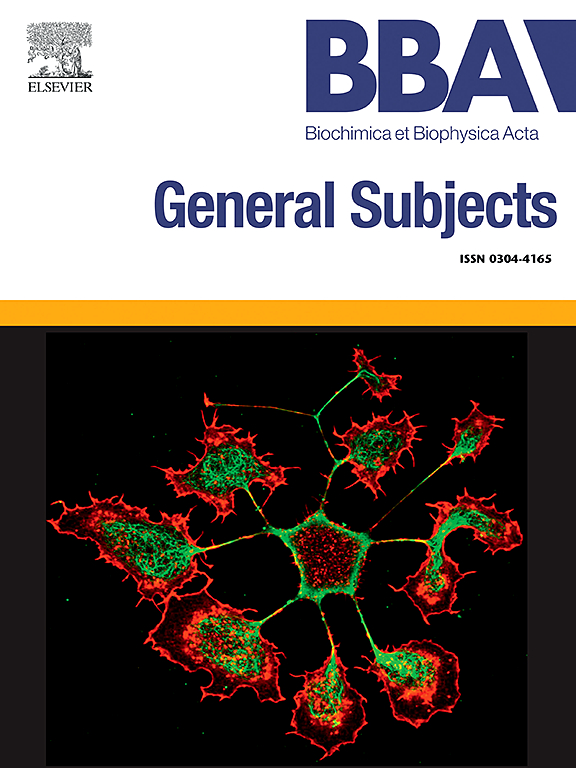双代立体和线性特异性单克隆抗体通过b细胞受体通过DNA和细胞免疫治疗应用。
IF 2.2
3区 生物学
Q3 BIOCHEMISTRY & MOLECULAR BIOLOGY
Biochimica et biophysica acta. General subjects
Pub Date : 2025-05-22
DOI:10.1016/j.bbagen.2025.130822
引用次数: 0
摘要
优化后的立体特异性靶向(SST)技术在DNA和细胞免疫后选择性地产生针对膜蛋白的构象特异性单克隆抗体,具有高特异性。该技术包括两个关键步骤,即抗原表达的骨髓瘤细胞通过B细胞受体(bcr)特异性选择致敏的B淋巴细胞,以及通过电脉冲选择性融合B细胞-骨髓瘤细胞复合物以产生分泌立体特异性单克隆抗体的杂交瘤细胞。在这里,我们能够通过双标记免疫荧光分析验证完整抗原表达骨髓瘤细胞选择B淋巴细胞的关键步骤。有趣的是,细胞复合体是一个单独的附着体。此外,我们还发现了新的进展,即优化后的SST技术可以双重生产抗完整型和抗线性型特异性单克隆抗体,用于抗人ephrin - a型受体2 (hEphA2)。优化后的SST技术不仅可用于生产立体特异性单克隆抗体,还可用于生产基于靶完整抗原通过bcr选择致敏B淋巴细胞的初级特异性单克隆抗体。通过产生针对完整抗原的双单克隆抗体,将引发更先进的医学应用。本文章由计算机程序翻译,如有差异,请以英文原文为准。

Dual generation of stereo- and linear-specific monoclonal antibodies through B-cell receptors by DNA and cell immunization for therapeutic applications
The optimized stereospecific targeting (SST) technique features selective generation of conformation-specific monoclonal antibodies against membranous proteins with high specificity after DNA and cell immunization. This technology consists of two critical steps, which are specific selection of sensitized B lymphocytes by antigen-expressing myeloma cells through B-cell receptors (BCRs) and selective fusion of B cell-myeloma cell complexes by electrical pulses to produce hybridoma cells secreting stereospecific monoclonal antibodies. Here we were able to verify the critical step for the selection of B lymphocytes by intact antigen-expressing myeloma cells by a double-label immunofluorescence analysis. Interestingly, the cell complex was a single attachment. Furthermore, we newly found the new progress that the optimized SST technique offered dual production of anti-intact and anti-linear specific monoclonal antibodies against a human ephrin type-A receptor 2 (hEphA2). The optimized SST technique may be useful for producing not only stereospecific monoclonal antibodies, but also primary-specific monoclonal antibodies based on the selection of sensitized B lymphocytes by the target intact antigen through BCRs. It would elicit more advanced medical applications by generating dual monoclonal antibodies against the intact antigen.
求助全文
通过发布文献求助,成功后即可免费获取论文全文。
去求助
来源期刊

Biochimica et biophysica acta. General subjects
生物-生化与分子生物学
CiteScore
6.40
自引率
0.00%
发文量
139
审稿时长
30 days
期刊介绍:
BBA General Subjects accepts for submission either original, hypothesis-driven studies or reviews covering subjects in biochemistry and biophysics that are considered to have general interest for a wide audience. Manuscripts with interdisciplinary approaches are especially encouraged.
 求助内容:
求助内容: 应助结果提醒方式:
应助结果提醒方式:


